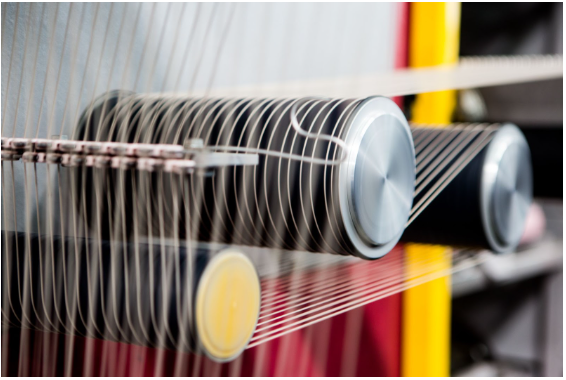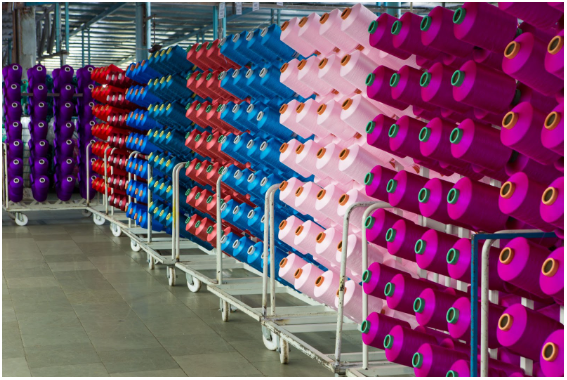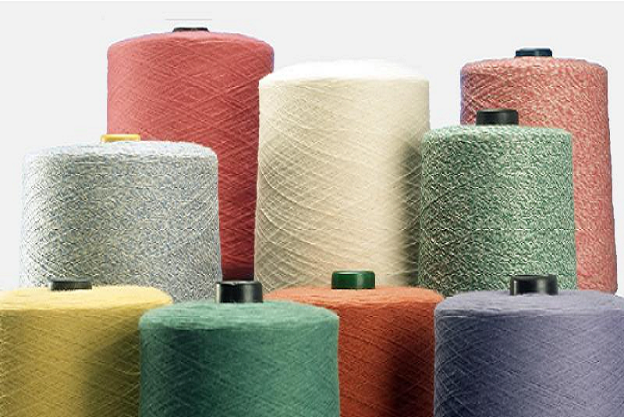Belting fabrics are typically manufactured from polyester and nylon filament yarns. These belting fabrics are utilised in numerous industries, whether it is mining, automotive, healthcare or construction. Due to their superior adhesion and high tensile strength, these fabrics can be easily used in industries that require the transportation of large qualities of materials. They are usually utilised for manufacturing automotive and conveyer belts that exhibit characteristics like high dimensional stability, high durability, abrasion and moisture resistance, optimal strain stress level, low elongation, and more, making them popular among manufacturers.
What are the types of belting fabrics?
There are several types of essential fabrics used in the production of automotive and conveyor belts.
R-fabric
This type of fabric is a rigid fabric, giving the belt good stability and strength. These fabrics are made of monofilament yarns, and their rigidity is determined by the type of monofilament yarn used for manufacturing.
N-fabric
N-fabrics are non-rigid fabrics. Due to their flexibility in length and width, N-fabric yarns are ideal for bulk transport and curved belts.
DRA-fabric
DRA-fabric is characterised as a special fabric used for conveyor belts. This fabric is an interwoven polyester fabric.
RZ-fabric
RZ-fabric is manufactured by combining monofilament yarn and viscose yarn and used in bakeries.
CP-fabric
This fabric is a combination of cotton and polyester fabric, where cotton absorbs moisture and polyester deploys strength to the belts.
W-fabric
W-fabrics are known as whisper fabrics as they produce little to no noise when used. These fabrics are an ideal fit for areas having a significant population such as airports or gyms.
M-Fabric
M-fabrics are made from monofilament yarns and exhibit enhanced strength. Such types of belting fabrics are used in heavy-duty tasks in industries such as mining and construction.
What are the uses of belting fabrics?
The applications of belting fabrics stretch over a plethora of industries and domains, from automotive to agriculture and retail to food and beverages. There are general-purpose belts and application-specific belts, and this segregation determines the construction and materials used in manufacturing these belts.
- Automotive: Automotive companies utilise belting fabrics for seatbelts in cars or other vehicles.
- Construction: Commercial companies use heavy-duty belts for construction equipment and materials like roof shingles.
- Manufacturing: The manufacturing domain uses conveyer belts to enable a seamless sliding of materials during the production process. They are also used to transfer packages toward an elevated region.
- Retail: Large-scale retail stores employ conveyer belts during checkout and inventory transferring and other commercial activities.
- Food and beverage: Conveyer belt applications can be seen in the food and beverage production processes.
- Mining: Mining generally uses heavy-duty conveyer belts for mining operations such as transporting heavy materials such as stones, ore, gravel and more.
- Power transmission: Conveyor belts can be used in the power transmission domain for industrial machines such as engine belts.
- Agriculture: Agriculture industry employs conveyer belts for various applications that include transferring crops and silage, farm equipment belts and more.
- Elevator: Conveyor belts are used in elevators to carry out controlled vertical movements.
Conclusion
AYM Syntex is among the global leaders in manufacturing specialty yarns and multi-polymer yarns. We provide base yarn for automotive seatbelts and other products for our clients, spread across a wide range of industries. Reach out to us for high-quality yarns.
Also Read :
i.What is the Importance of Yarn in a Fabric?
ii.Everything You Should Know About Bulk Yarn




